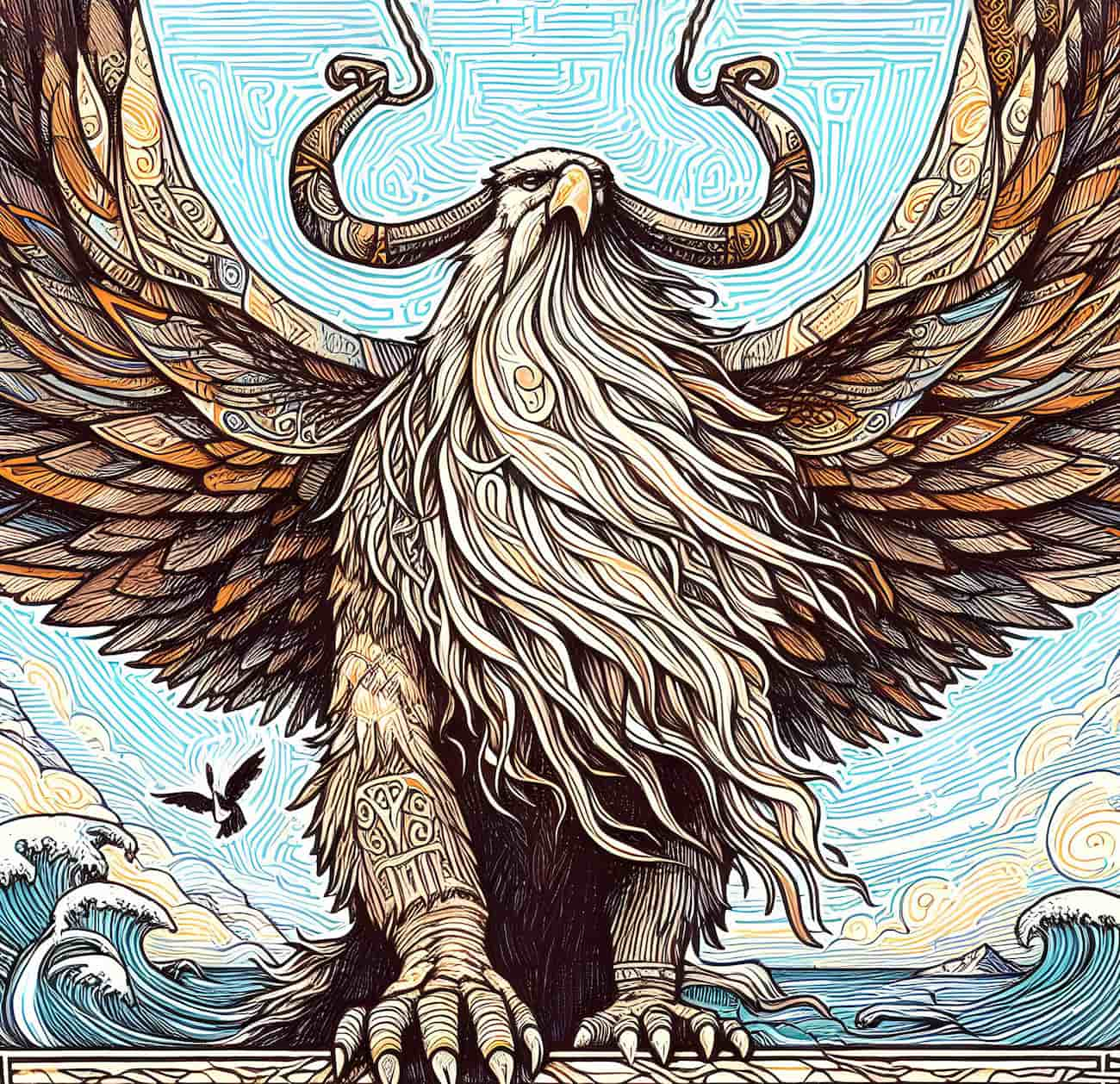Hræsvelgr: The Originator of Winds in Norse Mythology
Hræsvelgr is in Norse mythology a jötunn in the form of an eagle, who creates the wind with his wings. His name means 'corpse-swallower' or'shipwreck-current' in Old Norse.

Hræsvelgr is in Norse mythology a jötunn in the form of an eagle, who creates the wind with his wings. His name means 'corpse-swallower' or'shipwreck-current' in Old Norse.

